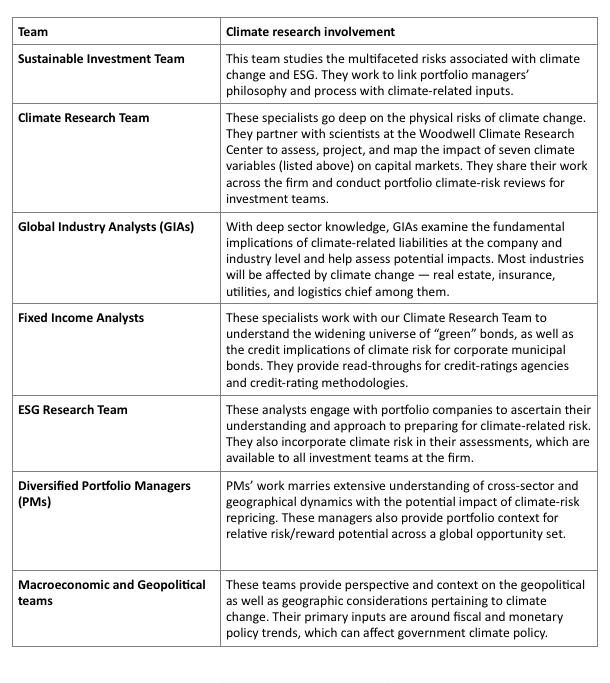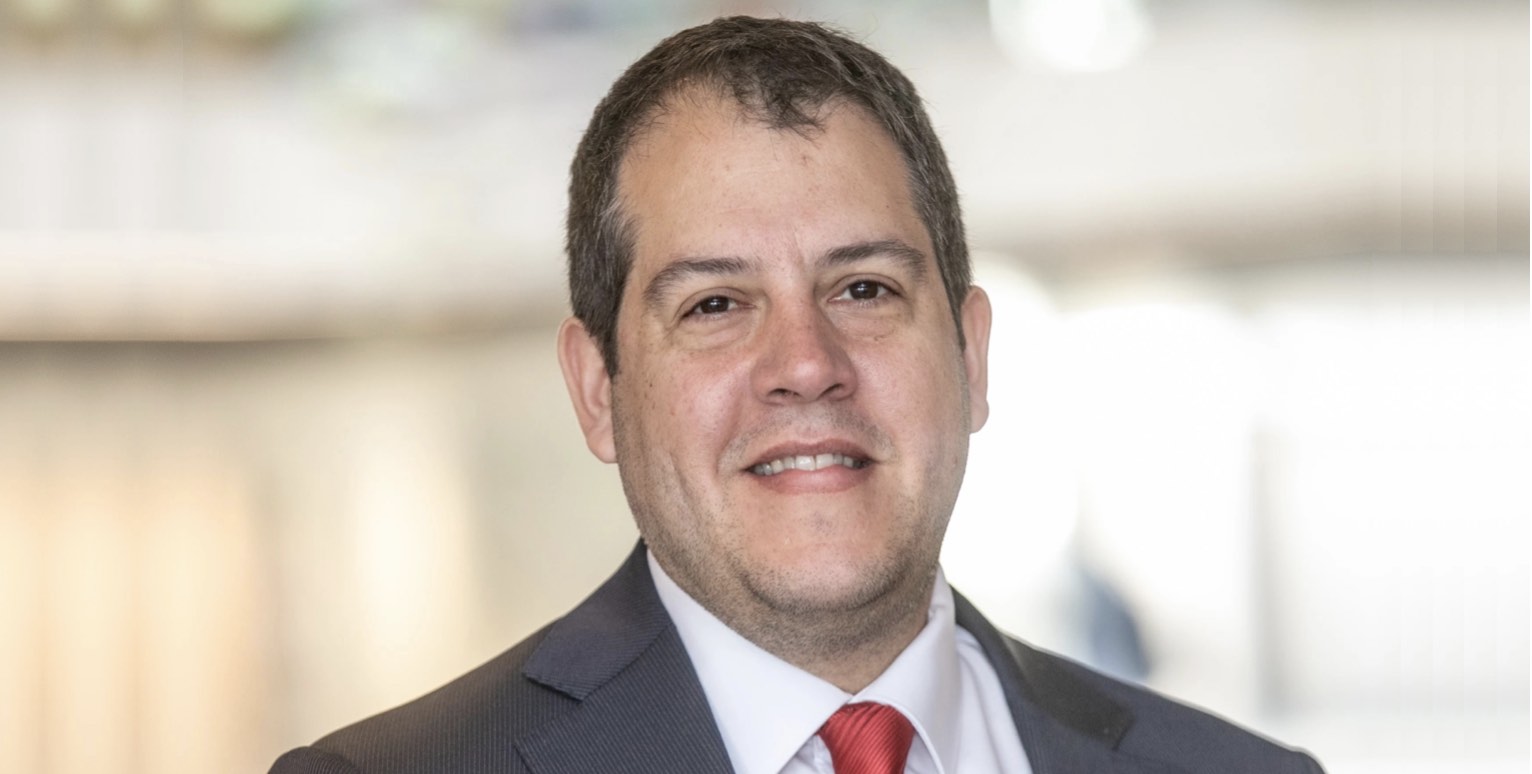By Alan Hsu, Portfolio Manger and Global Industry Analyst, Wellington Management
As climate change begins to affect asset prices, investment risks and opportunities will likely widen. To date, however, many asset owners — even those with long-lived liabilities — have failed to incorporate climate change into their portfolio management and capital allocation considerations. As active managers and fiduciaries, we consider it our responsibility to help grow our clients’ assets, and working toward solutions that enable us to accurately price assets is a big part of that. We believe a multidisciplinary research approach enhances our ability to get climate-related asset repricing right.
Accelerating solutions through collaboration
At Wellington, several research teams participate in the investment discussion around the physical risks of climate change. Whether studying heat, drought, wildfires, flooding, hurricanes, water scarcity, or air quality, we believe our investment mosaic gives us an edge in discerning which assets may face greater risk, and in more accurately quantifying those risks.
Our goals are to:
- Understand the causes, responses, and management of acute and chronic physical risks
- Identify entities that influence environmental management and regulation (municipalities, governments, industries, and NGOs)
- Assess which companies are actively factoring climate change (and related ESG considerations) into their strategic planning, and raise board and management awareness
- Improve our ability to quantify liabilities and appropriately price securities exposed to climate-related risks
- Invest according to where we see market inefficiencies with respect to climate risk
Climate research mosaic at Wellington
Toward solutions: It takes a village (and a market)
We believe, advancing comprehensive solutions to address climate risk requires the effort and attention of communities and financial markets. Policymakers, regulators, and citizens must recognize that more severe and frequent climate events are evidence of a long-term trend, and that rethinking solutions based on geographic location and adaptation is increasingly important. Regulation and technology must evolve to address the growing physical risks of climate change.
In our view, the investment community can help in two ways, by engaging with companies to raise climate awareness and preparedness and by pricing exposed assets as accurately as possible. Government funds only go so far in preparing communities for disasters or rebuilding neighborhoods after the fact. Property and casualty insurers exist to absorb reparation and remediation costs, but these are patchwork solutions at best. Investors must be more realistic about pricing assets to reflect near-term and long-duration risks associated with climate change. Corporate efforts at sustainability fall short when they neglect climate risk or fail to appreciate the potential consequences for supply chains, financial liability, and business-model durability. As prices more accurately reflect climate risk, and as issuers become more proactive and innovative, more capital will likely flow toward solutions.
Our work continues
This was a record year for climate change, with deadly heat waves in Europe, India, and even Siberia; wildfires that raged across Australia and the western United States; and the most active Atlantic hurricane season ever. The activity in 2020 is unlikely to be an anomaly: Climate change is a long-term trend with no sign of mean reversion.
Scientific data and models project that climate-related disasters will become more frequent, severe, and costly. In some places, governments, businesses, academic and philanthropic institutions, and private citizens have spent decades and billions of dollars adapting infrastructure, regulations, and ways of life. Many other places will need to do the same. Companies and communities that fail to prepare for climate change may lose significant value, while those that are able to adapt to and/or mitigate the effects may stand to benefit.
Understanding which solutions are needed and which entities will bear the costs of implementing them, is critical. We seek to identify assets that may contribute to or benefit from solutions that reduce climate risk, and avoid those that exacerbate those risks or face financial peril because of them. In my portfolio, I aim to invest in companies developing climate adaptation or mitigation solutions, particularly those that advance low-carbon electricity, energy efficiency, and climate-resilient infrastructure. Because we believe that the complexity of climate-related challenges remains largely underappreciated, we take a collaborative, multidisciplinary approach to climate research as a means to develop our knowledge and potentially deliver better long-term results for our clients.




